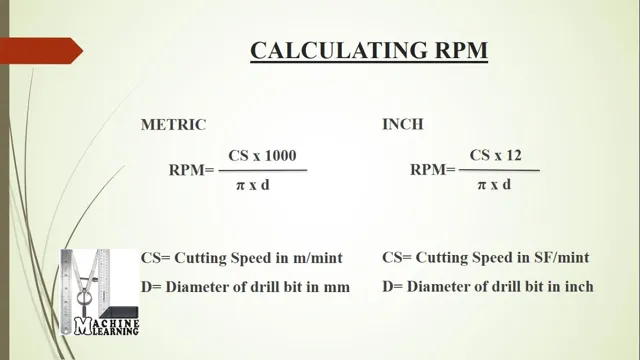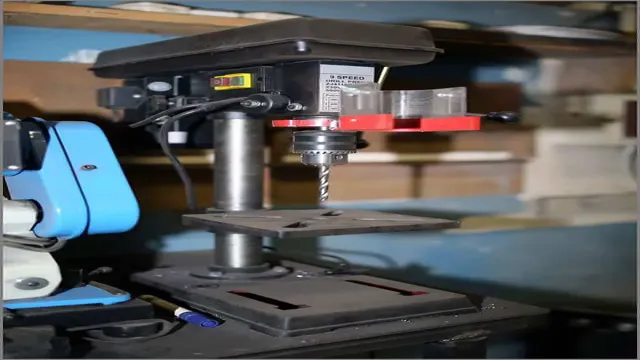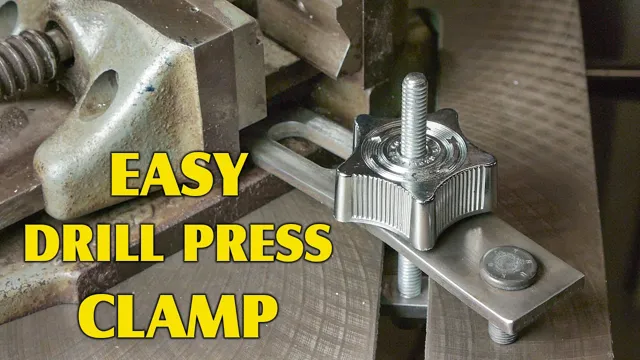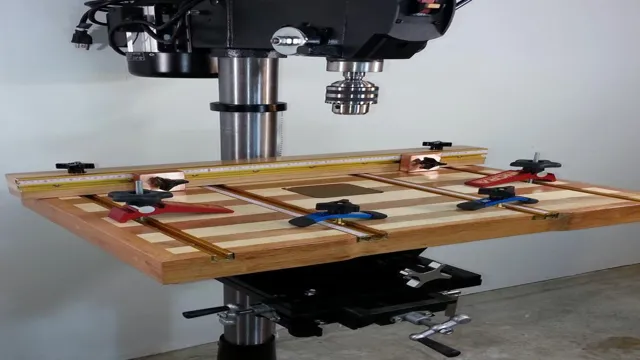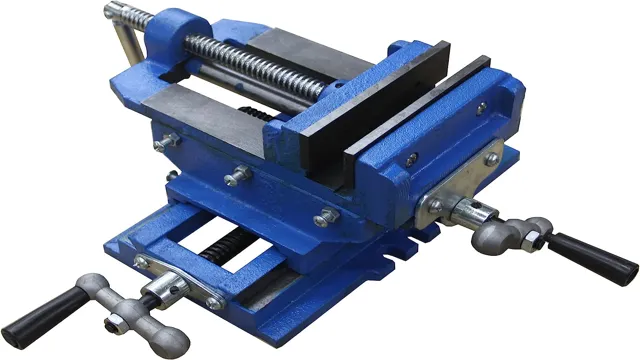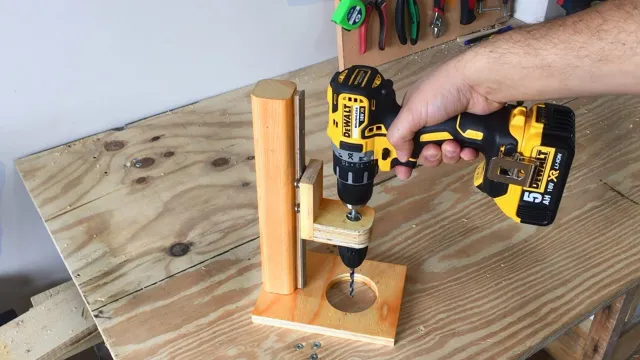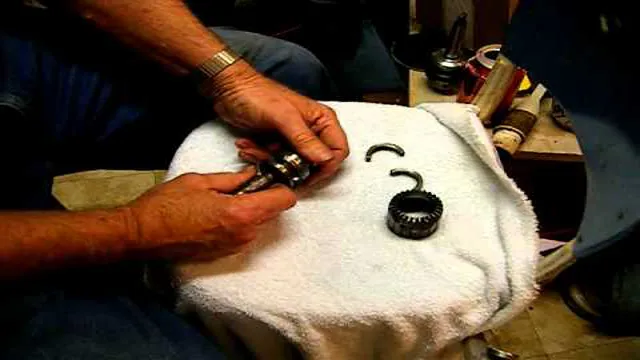How to Make Your Drill Press Hold Large Bits Easily: Tips and Tricks
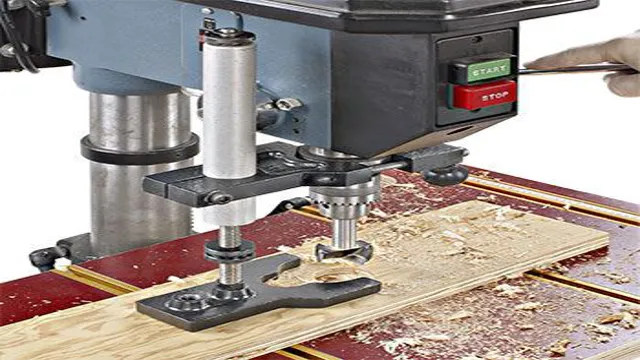
Drilling holes in thick materials can be quite challenging, especially if you’re using large bits. But if you have a drill press in your workshop, you’re already one step ahead. A drill press is a powerful tool that can significantly ease your work when drilling large holes.
It’s essential to know how to use it correctly to get the desired results. In this article, we’ll show you how to use a drill press with large bits and give tips on how to adjust it for different materials and bit sizes. Whether you’re a beginner or an advanced user, this guide will provide you with essential insights on using a drill press effectively.
So, let’s dive in and get started!
Understanding Your Drill Press
If you’re looking to use large-sized bits on your drill press, you may find it problematic to hold them in place securely. However, there are some simple steps you can take to improve your drill press’s grip on large bits. Firstly, make sure that your chuck is in great condition as it holds the bit in place.
A chipped or corroded chuck can reduce the bit’s grip, making it harder to use. Next, use a drill press that has enough power, as large bits require more energy to drill through material than smaller bits. Moreover, it’s important to decrease the drill’s speed and prevent the bit from overheating.
High-speed settings can cause more friction, which can cause the bits to overheat, blunt, or get stuck. Adjusting the belt to match the size of the bit can help prevent overheating. Finally, attempting to drill through any material at once puts excessive pressure on the drill bit, which can lead to failure.
So be sure to make multiple passes instead. By following these directions, you’ll be able to overcome the challenges of holding large bits on your drill press and finish any project with ease.
Check the Chuck Size
When it comes to understanding your drill press, it’s important to check the chuck size. The chuck is the part of the drill press that holds the drill bit in place, and different sizes of chucks are available for different types of drill bits. It’s essential to choose the appropriate chuck size for the type of drilling you’ll be doing, as using the wrong size can result in damage to the drill bit or the workpiece.
If you’re unsure about which chuck size is best for your needs, consult the manual or a knowledgeable professional. Remember, checking the chuck size is just one step in getting the most out of your drill press. By taking the time to understand how your drill press works and using it correctly, you can ensure precision, accuracy, and safety in all your drilling projects.
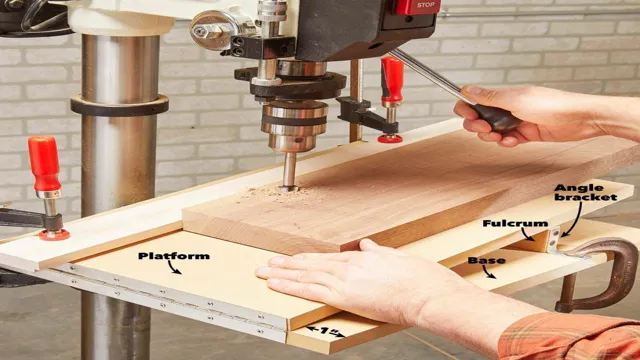
Adjust the Table Distance
When working with a drill press, it’s important to understand all of its features and how to adjust them properly. One of the key adjustments you’ll need to make is the table distance. This refers to the distance between the drill bit and the work surface, and it can greatly affect the accuracy and precision of your drilling.
To adjust the table distance, you’ll typically need to loosen a locking mechanism and move the table up or down using a crank or lever. Be sure to check your drill press manual for specific instructions, as the exact process may vary depending on your model. With practice, you’ll become comfortable adjusting the table distance to suit each project and achieve the best possible results.
Check the Motor Speed
When it comes to understanding your drill press, the motor speed is an essential factor to consider. The motor speed determines the speed at which the drill bit rotates, and this can affect the quality of the hole you make. If the motor speed is too low, the drill bit may struggle to cut through harder materials, while too high a speed can cause overheating and damage.
It’s important to check the motor speed before starting your project to ensure the best results. Many drill presses have a variable speed control, allowing you to adjust the speed to suit the material you’re working with. When selecting a drill press, consider the materials you’ll be working with most often to ensure you choose the appropriate motor speed range.
With the right motor speed, your drill press can help you achieve precise, clean holes every time.
Preparing for Large Bits
If you need to use large bits with your drill press, there are a few things you need to consider to ensure a safe and successful drilling experience. One important step is to properly prepare your drill press to accommodate the larger size of the bit. First, take a look at the chuck on your drill press.
If it’s not designed to hold larger bits, you may need to upgrade to a chuck with a larger capacity. Additionally, make sure your drill press is securely anchored to the work surface and that the table is adjusted to provide adequate support for the larger bit. You’ll also want to consider the speed at which you’re drilling.
Larger bits require slower speeds to prevent overheating and possible damage to the bit. Finally, make sure to use proper eye and ear protection and to avoid excessive force or pressure when drilling with large bits. By taking these precautions, you can safely and effectively use large bits with your drill press and complete your projects with ease.
Choose the Right Bit Type
When it comes to preparing for larger bits, it is crucial to choose the right bit type. Not all bits are created equal, and choosing the wrong one can lead to a frustrating and unsuccessful drilling experience. One important factor to consider is the type of material you will be drilling into.
For example, if you are drilling into wood, a Brad Point bit is a great choice due to its sharp point and ability to create clean, precise holes. On the other hand, if you are drilling into metal, a Cobalt bit is a better choice as it is designed to withstand the hardness of metals. By selecting the appropriate bit type, you can ensure that your drilling project will go smoothly and efficiently.
Remember to do your research and select the best bit for your specific needs.
Install the Bit Correctly
Installing a large bit can be an overwhelming task if you’re not properly prepared. Before you begin, ensure that you have the correct size chuck for your drill or drill press. Once you have the proper tools, it’s crucial to install the bit correctly.
Start by securing the bit into the chuck, making sure it’s straight and flush. Then, tighten the chuck with a key or your hand, being careful not to overtighten. It’s important to note that using a large bit can put a significant amount of strain on your tool and can even cause it to malfunction if not handled properly.
Always refer to your manufacturer’s instructions and take the necessary precautions to ensure a safe and successful drilling experience. With a bit of practice and attention to detail, you’ll be able to tackle any drilling project with confidence!
Adjust the Depth Stop
“Depth stop for large bits” One crucial aspect of using large drill bits is to adjust the depth stop properly. A depth stop helps to regulate the depth at which the bit penetrates the material, which is particularly important when drilling deep holes or using large bits. Before using larger bits, it’s essential to prepare the drill press by adjusting the depth stop to ensure that the desired depth is achieved accurately.
To adjust the depth stop, follow the instructions provided in the drill press manual and make sure to test the setting on a waste piece of material before starting your project. With the depth stop set correctly, you can drill with confidence, knowing that your holes will be the exact depth required. So take the time to adjust the depth stop before using large bits, and you’ll achieve precise and accurate results every time.
Tips for Holding Large Bits
Drilling large holes can be a challenge without the right tools. If you have a powerful drill press with the right specifications, the next step is to make sure it can hold large bits. For those who don’t know, large bits can be challenging to hold due to their size and weight, causing difficulties in accuracy and control.
To make your drill press hold large bits, the first thing you need to do is tighten the chuck securely. The chuck should be tightened enough to prevent the bit from slipping or wobbling. It’s also essential to check your drill press manual to make sure that it can handle the large bit size that you have in mind.
Another tip is to keep your bits sharp. This helps them to cut through materials with less resistance and also prevents them from getting stuck while drilling, which can cause damage to your equipment. Lastly, it’s important to maintain a stable and even pressure while drilling to ensure accuracy and control.
By following these tips, you can overcome the challenges involved in holding large bits and improve your drilling capabilities.
Use a Support Block
When working with large bits, it’s important to use a support block to keep them in place. This will prevent the bit from jumping or slipping, which could damage your workpiece and potentially cause injury. A support block is a simple tool that can be made from a piece of scrap wood or purchased at a hardware store.
It should be placed underneath the workpiece, directly beneath the area where the bit will be drilling. This will provide a stable base for the bit to push against, allowing you to maintain control and accuracy throughout the drilling process. Don’t underestimate the importance of this simple tool when working with large bits – it could make all the difference in the success of your project.
Reduce Speed for Larger Bits
When working with larger bits, it’s important to reduce the speed of your drill to prevent damage to the bit and the material you’re drilling. As a general rule, the larger the bit, the slower your drill should turn. This will help prevent the bit from overheating and potentially breaking.
In addition to reducing your speed, it’s important to have a secure grip on the bit when drilling. Using a bit extender or handle can help you maintain control and ensure that the bit doesn’t slip out of your hand. Remember to always wear protective gear when working with power tools, including safety goggles and gloves.
By following these tips, you can safely and effectively use larger bits when drilling.
Conclusion and Safety Precautions
In conclusion, if you want your drill press to hold larger bits, there’s no need to drill yourself into a hole. Simply follow the tips we’ve provided, like using a drill press extension or upgrading your chuck, to make sure your holes come out just as big as your ambitions. With these tricks up your sleeve, you’ll be boring through thick wood and metal before you can say ‘drill baby drill!'”
FAQs
What is the maximum drill bit size that a typical drill press can hold?
The maximum drill bit size that a typical drill press can hold is 5/8 inches.
Can I modify my drill press to hold larger bits?
Yes, you can modify your drill press to hold larger bits by purchasing a larger chuck or a special drill press attachment.
What safety precautions should I take when drilling with large bits on a drill press?
When drilling with large bits on a drill press, make sure to wear eye protection and secure the material being drilled down to prevent it from spinning or becoming loose.
What is the best way to select the appropriate speed for drilling large bits on a drill press?
The appropriate speed for drilling large bits on a drill press can be determined by referring to the manufacturer’s recommended speed chart based on the diameter of the bit and the material being drilled.
Can I use lubrication when drilling with large bits on a drill press?
Yes, using lubrication when drilling with large bits on a drill press can prolong the life of the bit and reduce heat buildup. Make sure to use the appropriate type of lubricant for the material being drilled.
Can a drill press handle drilling through thick metal with large bits?
Yes, if the drill press is powerful enough and the appropriate bit and speed are used, it can handle drilling through thick metal with large bits.
What is the advantage of using a drill press over a hand-held drill for drilling large holes?
The advantage of using a drill press over a hand-held drill for drilling large holes is that the drill press provides a more stable and accurate drilling platform, allowing for greater precision and consistency in hole size and placement.

